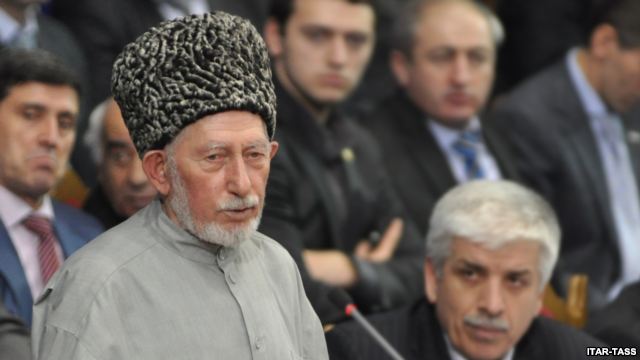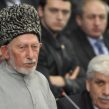
Violence in Dagestan Accelerated in 2012
Publication: Eurasia Daily Monitor Volume: 10 Issue: 4
By:

At the start of 2013 it makes sense to summarize the events of the previous year. The official figures from 2012 suggest that the Republic of Dagestan today is the primary base of the armed resistance in the North Caucasus: 262 terrorism-related crimes were committed in Dagestan during the first eleven months of 2012, 42 more than in the entire year of 2011 (https://news.mail.ru/inregions/caucasus/5/society/11483342/). At the same time, the rest of the North Caucasus region—Chechnya, Ingushetia, Kabardino-Balkaria, Karachaevo-Cherkessia and Stavropol—experienced only 176 terrorism-related crimes during the first eleven months of 2012. According to an analysis of open sources, 232 insurgents were killed in Dagestan out of a total of 379 insurgents killed in the North Caucasus in 2012. In comparison, 171 militants were killed in Dagestan in 2011. About 200 suspected militants were arrested and 21 people who helped the rebels voluntarily surrendered to the authorities in 2012 (www.riadagestan.ru/news/2012/12/30/148860). Top militant commanders were among the insurgents killed in Dagestan, including Ibragimkhalil Daudov (aka Emir Salikh), who was killed on February 14, 2012. At the same time, 211 servicemen, including 149 police officers, were killed in the ongoing conflict with the militants in the North Caucasus (www.yuga.ru/news/282753/). Of those, 130 servicemen were killed in Dagestan, and approximately as many servicemen in the republic were injured. Thus, judging by open source data, the number of deaths in insurgent violence in Dagestan in 2012 accounted for two-thirds of the total number of deaths in insurgent violence in the North Caucasus.
Despite these statistics, Dagestan clearly demonstrated a willingness to start a dialogue between the followers of the two Islamic teachings, Sufism and Salafism. At the end of last April, a joint session of the two opposing Islamic factions took place at Makhachkala’s main mosque. Imams and theologians of Sufi and Salafi origin from Dagestani towns and villages took part in the gathering. The official Spiritual Board of Muslims of Dagestan represented the Sufis, while the Association of Scholars Ahl al-Sunna represented the Salafis (https://moidagestan.ru/news/analytics/18745). As a result, on May 2, progress was announced and a resolution consisting of seven points was adopted (www.regnum.ru/news/polit/1610314). The conciliatory resolution called on both sides to refrain from labeling each other as infidels, accusing each other of terrorism or reporting those who do not adhere to Sufi teaching to the police as rebel accomplices (https://moidagestan.ru/news/analytics/18745). However, the murder of Sufi imams remains a serious obstacle to uniting Dagestan’s Muslims. Eight Muslim clerics were killed in the republic last year alone (www.kavkaz-uzel.ru/articles/217942/). The murder of the republic’s most influential sheikh, Said Chirkeiski (Atsalov), had an especially adverse effect on the process of reconciliation between Sufis and Salafis in Dagestan (www.georgiatimes.info/interview/79818.html).
The violent death of Sheikh Said Chirkeiski indicated that the adversaries in the conflict crossed a line they had avoided crossing during the previous 12 years of the conflict. The murder of Muslim clerics in Dagestan will now probably accelerate. This is connected not to the radicalization of the resistance movement, but rather to generational change. The insurgency is being taken over by young people who never experienced the influence of sheikhs, which removes barriers to the young insurgents attacking Sufi clerics.
The commission for rehabilitating former militants was given much publicity and raised hopes it would help the government convince young members of the insurgency to surrender. In practice, however, the commission in the two years of its existence has dealt with only about 50 people, none of whom can truly be considered a militant (www.georgiatimes.info/news/82644.html).
The attempts by officials to encourage well-known Muslim scholars from the Middle East to condemn militant actions also failed. Using the Dagestani authorities as a cover, the Kremlin organized two large theological conferences in 2012. However, neither of the gatherings produced what Moscow desired—a fatwa condemning the militants. The first of the conferences took place near the Kremlin at Moscow’s Ritz-Carlton Hotel on May 25–26. Over 200 influential Islamic scholars, Russian muftis and experts from 20 Islamic countries participated (www.kavkaz-uzel.ru/articles/207059/). The next attempt was made at the all-Russian “Dagestan Is Territory of Peace” conference, which took place in Makhachkala on November 17 (https://xn--c1adwdmv.xn--p1ai/news/1594963). The International Union of Muslim Scholars, headed by its secretary general, Ali Al-Muhiddin Karadagi, participated in this conference as well, but still no fatwa came out of it. The Kremlin’s website even published the conference’s resolution and called it a fatwa (www.riadagestan.ru/news/2012/11/27/146934/). However, none of the rebels really accepted it and the two sides stuck to their old positions.
The government also realized that it is powerless to control the situation in the republic. To reassert control and ramp up operations against the militants, the authorities sent in reinforcements from Chechnya (https://rukavkaz.ru/articles/news/1781/). Seven special detachments of Interior Ministry troops were set up in Dagestan to fight the insurgency (www.kavkaz-uzel.ru/articles/203748/) and reassert government control in areas where militants were especially active.
Officials made an important admission about using the army against militants (https://m.specletter.com/politika/2012-10-08/moskva-vvela-voiska-na-territoriju-gornolyzhnogo-kurorta.html), even though people in the region had been aware of the army’s participation in special operations previously. The military sealed off settlements while aviation bombed mountains and woodlands (https://chechnya.kavkaz-uzel.ru/articles/48323/).
The increase in violence in the region is obvious; however, the conflict is also growing worse in Dagestan as well as in the entire North Caucasus. Against the backdrop of multiple killings of young members of the jamaats, Salafi ideology will attract more young people who regard the teaching as the only way of resisting the local authorities who work under Moscow’s auspices. Salafism in contemporary Dagestan has become a serious counterweight to official Sufism, as the latter has undermined its authority by close cooperation with the government. Sufism’s loss of authority is directly linked to the young people’s drift toward joining the ranks of the jihadists. Dagestan is the largest of the North Caucasian republics in terms of both area and population, which means that Russia will face an increasingly uphill battle to combat the widening insurgency in this republic. That is the main result of 2012 in Dagestan.




